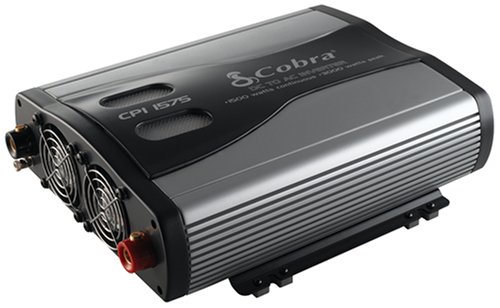Advantages and Disadvantages
Electrical heating is clean, compared with forms of heating which involve combustion, e.g. gas, oil, coal, etc. There are no fumes or flues associated with it. It is usually cheaper and easier to install than other forms, either in a new build, or in an existing house. It can conveniently be used as 'top up' heating, where gas or other other central heating is used as the main form of heating. Many (but not all) electrical heaters are portable and respond quickly.
It is generally more expensive to run, although the relative costs compared with, say, gas depend on local conditions and costs at any particular time.
The running costs of electrical heaters will be high if the heater has no thermostat, and is left on for long periods, unless it is a low wattage heater. Thus only use a high power heater, without a thermostat, if it is just to be used to heat up a room for a short time, then switched off. Plug-in thermostats can be used to provide an external temperature control for the heater. Many heaters have 'frost watch' settings, which only switch the heater on if the temperature goes to freezing, making them a useful precaution against burst pipes.
Many heaters have built in timers allowing them to be switched on and off automatically at pre-set times. You will pay extra for this, and often it is cheaper to buy a 24 hour plug-in timer to use with the heater.
The main forms of electrical heaters are:
Underfloor Heating
This consists of electrical heating cables laid under floors. (Pipes containing hot water heated by gas, or another fuel, are another form of underfloor heating.) I would only consider this in a new build. The cost and disruption of installing underfloor heating in an existing property is considerable.
Storage Heaters
These are fairly large heaters, wall mounted, which use off peak (cheaper) electricity during the night, and store the heat to release it slowly during the day. Special wiring and off peak meters must be installed, and the electricity supplier must arrange for you to be put on an 'off peak' tariff. It is an option to consider if central heating is required and gas or other fuels are not available. It is probably the cheapest form of central heating to install, but can be expensive to run. It does not respond quickly to sudden changes in temperature. If there is a sudden cold spell during the day, it will not be until the following night that adjustments to the heating will take effect.
Fan Heaters
These are cheap, small, portable and heat up quickly. They are ideal for top-up heating. They can also be used, in summer, as fans only. The noise of the fan can be irritating though, and if this is a consideration, it is better to use convector heaters.
Convector Heaters
Again ideal for top up heating, but slightly slower, bigger and more expensive to buy than fan heaters. They can be floor standing or wall mounted. They are almost silent though, except for the fan operated ones, which don't seem to have any advantage over the smaller and cheaper fan heaters.
Panel Heaters
These are very slim wall mounted heaters. They occupy a large wall area. They usually don't have a thermostat, so are on all the time.
Oil Filled Radiators
These look like conventional central heating radiators. There are flat ones that can be wall mounted, and wider ones, on wheels, so that they can be moved to different rooms. They are slower to respond than fan or convector heaters, but some people prefer their lower temperature over a bigger area.
Tubular Heaters
These are tubes, varying in length from about 350mm to 2000mm (1' to 6'). They are usually wall mounted. They are very low wattage (about 150W per metre) and don't have a thermostat. They are normally used in greenhouses, animal cages, airing cupboards, behind fridges and freezers in outhouses where it gets too cold for the fridge to operate normally, etc.
Bathroom and Toilet Heaters
In a bathroom, the heater must either be operated by a pull cord switch, or externally, from another room. The latter would usually be a wall mounted panel heater (these can be supplied with towel rails to dry towels as well). The former could be a downflow fan heater or radiant heater, mounted on a wall near the ceiling, for which wiring would have to be installed, or heat/light unit, replacing the existing light fitting. 250W heat/light bulbs can also be put into an existing light unit (without using a shade), to give some heating.
Electric Fires
These can vary from the cheap radiant fires, or the more recent halogen heaters, to expensive coal, log or flame effect fires, often used as a focal point for a room. The latter commonly combine radiant and convection heating.
Other Electrical Heaters
Air curtains, plinth heaters, etc. usually employ natural or forced convection, designed to fit in a particular location, such as above a door or in a plinth. Ceramic and quartz heaters usually employ a mixture of radiant and convected heat, and are often more powerful than conventional domestic heaters, making them useful in industrial applications.












